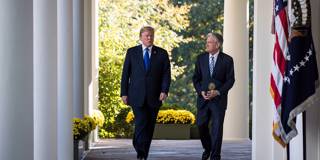Economists have repeatedly tried to explain to Donald Trump that trade agreements may affect which countries the US buys from and sells to, but not the magnitude of the overall deficit. But, as usual, Trump believes what he wants to believe, leaving those who can least afford it to pay the price.
NEW YORK – In the new world wrought by US President Donald Trump, where one shock follows another, there is never time to think through fully the implications of the events with which we are bombarded. In late July, the Federal Reserve Board reversed its policy of returning interest rates to more normal levels, after a decade of ultra-low rates in the wake of the Great Recession. Then, the United States had another two mass gun killings in under 24 hours, bringing the total for the year to 255 – more than one a day. And a trade war with China, which Trump had tweeted would be “good, and easy to win,” entered a new, more dangerous phase, rattling markets and posing the threat of a new cold war.

NEW YORK – In the new world wrought by US President Donald Trump, where one shock follows another, there is never time to think through fully the implications of the events with which we are bombarded. In late July, the Federal Reserve Board reversed its policy of returning interest rates to more normal levels, after a decade of ultra-low rates in the wake of the Great Recession. Then, the United States had another two mass gun killings in under 24 hours, bringing the total for the year to 255 – more than one a day. And a trade war with China, which Trump had tweeted would be “good, and easy to win,” entered a new, more dangerous phase, rattling markets and posing the threat of a new cold war.